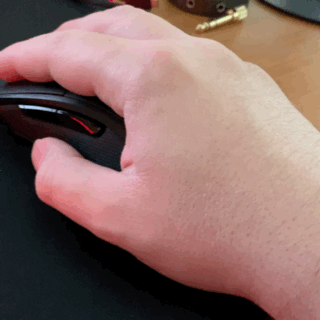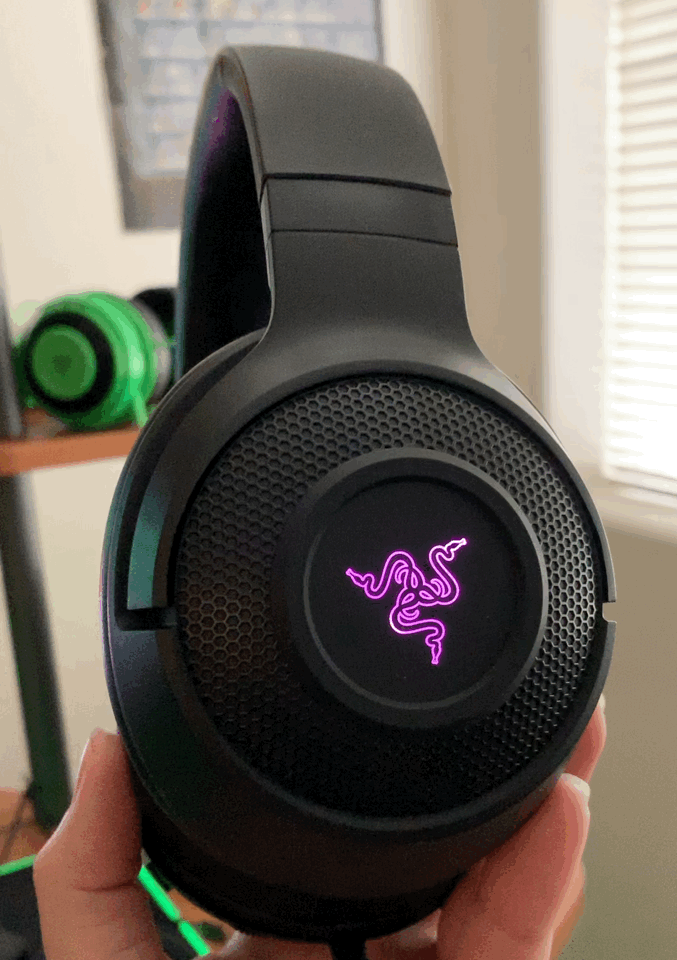HyperX Pulsefire Dart Wireless Gaming Mouse Review
I had never used a HyperX mouse until this past week, and my time with the Pulsefire Dart makes me wish I had tried one sooner.
Photo taken by the author.
The HyperX Pulsefire Dart is a wireless gaming mouse that also has a great design for office productivity tasks. It sells for a standard retail price of $99 (official site here) and frequently receives retail discounts. I bought mine for around $77 from Amazon. None of the links in this article are affiliate links, as I don’t believe in the practice. In the box you get a proprietary mini USB wireless receiver, a dock to position said receiver close to your mouse to maximize lag performance, and a rubberized USB cable. Battery life is rated for 50 hours depending on your usage and lighting settings, and that seems conservative in my testing.
If you’re looking for something that follows the current popular trend in gaming mice towards ultralight frames, you’ll have to look elsewhere. The Pulsefire Dart weighs in at 110g, which is pretty hefty. But you get some great perks along with that weight. The standout feature is Qi wireless charging, which is compatible with most of the wireless charge pads on the market, including the HyperX Chargeplay base they sent me way back when I reviewed the Cloud Flight S headset.
The wireless charge coil adds to the weight of the mouse, but it’s placed smartly near the back of the body where that weight doesn’t impact the feel or control you’ll have while using it. In fact, in spite of spending the last couple of years using dramatically lighter mice, I had no issues adjusting to the weight of the Dart in about a day. The contoured body has a leftward tilt at the back and as such is designed for right-handed use, and its large size meant I found it worked best with a palm grip.
Wireless charging isn’t the only perk that comes along with the extra weight here. The sides of the mouse feature premium-feeling leatherette-covered cushions embedded deep into the body of the mouse. These are much nicer to hold than the typical textured plastic or rubber grips used on a lot of gaming mice. While the plastic areas aren’t quite as awesome as the special coating on the Roccat Kain I reviewed recently, the leatherette sides elevate the comfort here, and give this a look that fits just as well in an office as it does in a gaming setup.
The Pulsefire Dart is a great all-around mouse as a result of its larger design and luxurious styling. It has controllable RGB lighting and a 16,000 DPI PixArt 3389 sensor for when you need to do some intense gaming, and a full- size body with leatherette sides for when you want to get some work done. The overall build quality is tank-like for the price, although the mouse wheel is mounted lightly enough that it’ll rattle a little if you’re the sort of person who picks up your mouse and shakes it around.
Buttons have a good tactile response to them in spite of using “mere” Omron mechanical switches as opposed to the optical switches so in vogue today. The buttons respond really well, and after a week of heavy use I haven’t noticed any issues with creaking or with the feel of their travel. The mouse wheel has a very light scroll to it with some light notches in it, and a very soft light click compared to the average gaming mouse. That might not be to your personal tastes, but it works for me just fine. The thumb buttons are placed well for all grip styles, though again the larger curved body here means that palm or claw are probably the comfiest options.
You can customize the mouse’s lighting and sensor with HyperX’s Ngenuity software, which then writes your settings to the mouse’s internal memory. So, you won’t need to keep the software running if you don’t want to, or install it on multiple machines. The DPI switch button is small and out of the way, but easy to find in the heat of the moment, and has three customizable slots by default, though you can add more in the software. The mouse has a USB C port for charging or wired use, but I never needed to use it thanks to the excellent wireless charging. It’s not too deeply recessed, so you shouldn’t have an issue using third party cables with it.
Screenshot captured by the author.
I haven’t used a mouse with a swooping productivity-style shape like this since the good old days of the Microsoft Intellimouse lineup, and the last week has reminded me how comfy this shape can be (as long as you’re a right- handed user). It’s not the best choice for intense fast flicks perhaps due to its weight, but as a mouse that splits the difference between gaming and standard use, it’s wonderful.
I also love that this mouse has standardized wireless charging, and even though it adds to the weight of the device, I’d love to see more headsets, mice, and controllers try this. A friend of mine was hopeful that the PS5 would have built in wireless charging for its controllers on the large top plate of the console, and since he proposed that I haven’t stopped thinking about how cool it could have been. This mouse feels like it fell out of the future as far as charging goes, and it’s a wonderful convenience not to have to transfer the cable between the mouse and the dock every couple of days. It’s far easier to just plop the mouse on the charge pad overnight and pick it back up the next day, and I get a little kick out of it every time.
Photo taken by the author.
At this price point it’s tough to find a more fully-featured mouse. If you’re good with the shape, weight, and stylish design that doesn’t scream “gaming” as much as some of the other popular options right now do, this is a great buy. If you already own a wireless charger for your phone, there’s an extremely good chance this mouse will work with it, too. I hope that whenever this mouse gets its inevitable “pro” revision with optical switches, a lighter design, and a more ambidextrous frame (and maybe an HP logo hmm), that it keeps the Qi charging support.
The HyperX Pulsefire Dart proves that stylish design touches and sturdy mechanical switches are still just as viable in today’s market as newer concepts. No other mouse I’ve encountered has such nice leatherette side grips, and no one else out there has such an elegant wireless charging implementation for a mouse, to my knowledge. I remember that a few years ago Logitech tried a wireless charge solution, but it required a special back plate for supported mice and a specific expensive Logitech mouse pad. Compared to that, the Pulsefire Dart is a dream.










